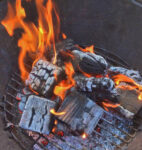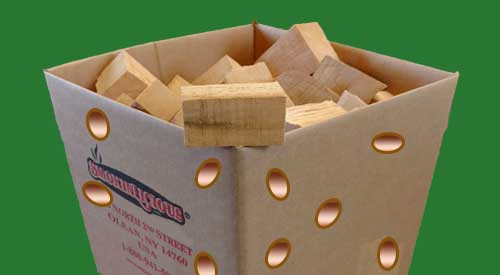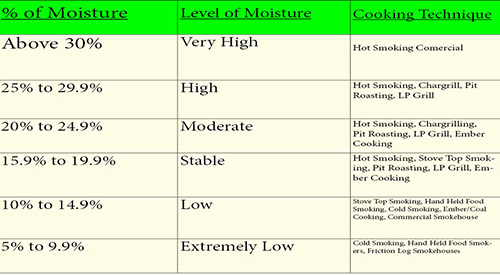Thu 25 Jan 2018
THE HISTORY OF FIRE COOKING PART I
Posted by DrSmokeRead other related stories: Wood Science
1 Comment
The history of fire cooking part I
THE HISTORY OF FIRE COOKING: PART I

the fire
 the history of fire cooking part I
the history of fire cooking part I
For thousands of years, it was the only way to cook. Many believe that this discovery separated man from the other animals. Fire.
Estimated to have been discovered some 2 million years ago, the discovery of fire and more importantly, the discovery of how to tame fire, resulted in man’s brain development, value of food, changes in our body, and social structure. It gave us survivability. It extended our life by improving daily calories and nutritional needs by allowing us to cook poisonous plants and meats.
So how did fire cooking get discovered? That is the million dollar question. Here are some of the hypotheses out there regarding the discovery of fire for cooking:
The History of Fire Cooking Part I- Nature Provides Ignition
There are some scientists who believe that fire cooking was found by accident. A lightning strike or grass fires that sprung up due to the excessive dry conditions exposed to the hot sun. Many don’t feel man did anything to “discover” fire other than observe the characteristics of fire: it produces abundant heat, light, and when it traps an animal within its flames, it produced a more tender meat, easier to digest food source, and more pleasing aroma to the meat.
Tool Construction
There are others who believe that early humans realized the importance of tools. By sharpening stones to produce spears, cutting tools, etc., these early beings observed spark. Either through intention or perhaps with Mother Nature’s assistance, these sparks caught twigs, brush, fruit, and/or grains on fire. Remember, early human life did not involve a developed brain. A discovery of fire, however, would help advance not only our brains, but our bodies into the erect beings we are today.
The Earliest Cave Cooking
In South Africa’s Northern Cape province, a dwelling known as Wonderwerk Cave, contains the earliest evidence that our ancestors and apelike ancestors were using fire. Compacted dirt showed evidence of ashes, carbonized leaf and twig fragments, and burnt bits of animal bones. Scientists were then able to analyze this material and determine that the fragments were heated between 750 and 1300°F, which is the heat level of a small fire made of twigs and grasses.
If indeed our earlier species learned to harness fire for cooking, this would account for the advancement of our brains and our ability to become erect beings walking on two legs. Cooking on fire allowed for easier chewing and digestion and produced extra calories to fuel our brains. Fire also warded off nighttime predators, allowing for sleep on the ground or in caves rather than in the trees.
It’s All About Energy
Raw food diets have been popularized as a method of losing weight and of being healthier. However, only a fraction of the calories in raw starch and protein are absorbed by the body via the small intestine. As a result, the remainder passes into the large bowel, where it is broken down by the organ’s high population of microbes, which consume the majority for themselves. However, cooked food is mostly digested by the time it enters the colon. For the same amount of calories ingested, the body gets roughly 30 percent more energy from cooked oat, wheat or potato starch as compared to raw, and as much as 78 percent from the protein in an egg. In experiments, animals given cooked food gain more weight than animals fed the same amount of raw food.
Cooking breaks down collagen (connective tissue in meat) & softens the plants’ cell walls to release their storage of starch & fat. The calories to fuel the bigger brains of successive species of hominids came at the expense of the energy-intensive tissue in the gut, which was shrinking at the same time. If you look at early imagery of apes, you’ll see how we morphed into narrow-waisted Homo sapiens.– the history of fire cooking part I
Coming up in The History of Fire Cooking: Part II, learn more about why cooking foods by fire made us who we are today. In conclusion, did we provide you with new information you didn’t know? Additionally, leave us a comment and subscribe as we bring recipes, tips, techniques, and the science behind the fire and smoke.
Purchase products:
Wood Chips- Grande Sapore®
Wood Chunks- Double & Single Filet

More Related reading on “What Wood for Smoking” and other great smoking and grilling tips and techniques
Additional reading:
-OPEN PIT COOKING FIRE BUILDING: PART I
-GRILL-BUILDING THE PERFECT COOKING FIRE- PART II
-IS WOOD-TAR CREOSOTE THE ‘MONSTER’ TO WOOD-FIRED COOKING

I hope you enjoyed the history of fire cooking part I



